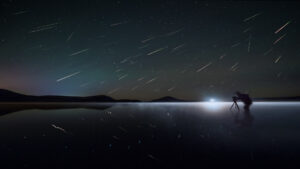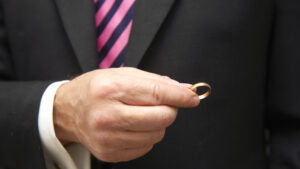New thinking at Musgrave delivers stunning Starlight discovery

Pic:Getty
Special Report: Musgrave Minerals boss Rob Waugh says the Starlight gold discovery that has set the company’s share price alight is a great example of the rewards that can come in mineral exploration when conventional thinking is challenged.
Musgrave (ASX:MGV) stock has surged from around 10c to more than 40c in the past couple of months as the company has delivered a series of stunning near-surface high-grade intercepts from drilling at Starlight, part of the Break of Day deposit at its Cue gold project in WA’s Murchison district.
Hits such as 12m at 112.9 g/t Au from 36m including 6m at 143.0 g/t Au from 42m and 42m at 77.3 g/t Au from 30m including 18m at 179.4 g/t Au from 30m are among some of the best seen at an Australian gold project in recent years.
But they may never have been produced had Waugh and his geoscience team not had the good sense to test a different interpretation of the geology that features in that part of the Murchison.
“There was a slight geological anomaly that didn’t fit the existing model,” Waugh, a former WMC geologist, said. “That was reason enough for us to start thinking differently. We turned the drill rig around.”

Musgrave owns 100% of the established gold resources at Cue, which amount to 6.45 million tonnes at 3.0 g/t gold for 613,000 ounces, contained mainly in the Break of Day and Lena deposits. The new Starlight discovery is not yet included in this resource.
The mineralised structures in which the existing resources are hosted run in a north-west/south-east orientation. The holes that have been drilled at Starlight are the only holes drilled in the whole Cue project drilled in a north-east/south-west orientation.
“The lesson that we learnt with Starlight was don’t be blind to different interpretations, don’t get stuck in a particular mindset,” Waugh said.
Starlight is set to add materially to the gold inventory at Break of Day (currently 868,000 tonnes at 7.2 g/t Au for 199,000 ounces) when an updated resource estimate is published in the September quarter.
It has also greatly improved the deposit’s development prospects, given that near-surface gold is very beneficial when it comes to repaying project capital in a rapid manner.
The most recent set of assays from Starlight included an intercept of 22m at 21.0 g/t Au from a depth of 2m, prompting amazement from Waugh that it had remained undiscovered all this time.
“The prospectors that worked the ground at the turn of the century were pretty cluey and Starlight is only 2km from the old rail line that ran through there,” he said.
“It just goes to show that the idea that there’s nothing to find close to the surface in Australia anymore is a misconception. Sometimes you just need to challenge the paradigm.”
“It might not be world-class, but there can definitely be significant economic value to it.”
Musgrave is due to announce results from another batch of reverse circulation holes drilled at Starlight within the next week.
A diamond drill rig arrived on site last week and has begun testing depth extensions of the mineralisation.
This story was developed in collaboration with Musgrave Minerals, a Stockhead advertiser at the time of publishing.
This story does not constitute financial product advice. You should consider obtaining independent advice before making any financial decisions.
Related Topics

UNLOCK INSIGHTS
Discover the untold stories of emerging ASX stocks.
Daily news and expert analysis, it's free to subscribe.
By proceeding, you confirm you understand that we handle personal information in accordance with our Privacy Policy.








